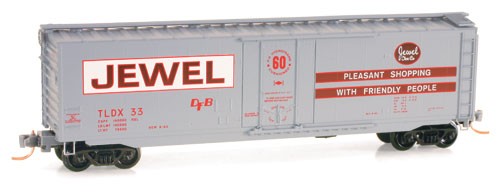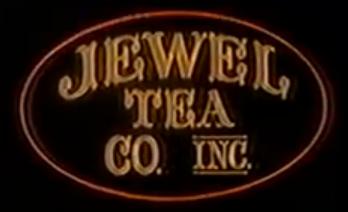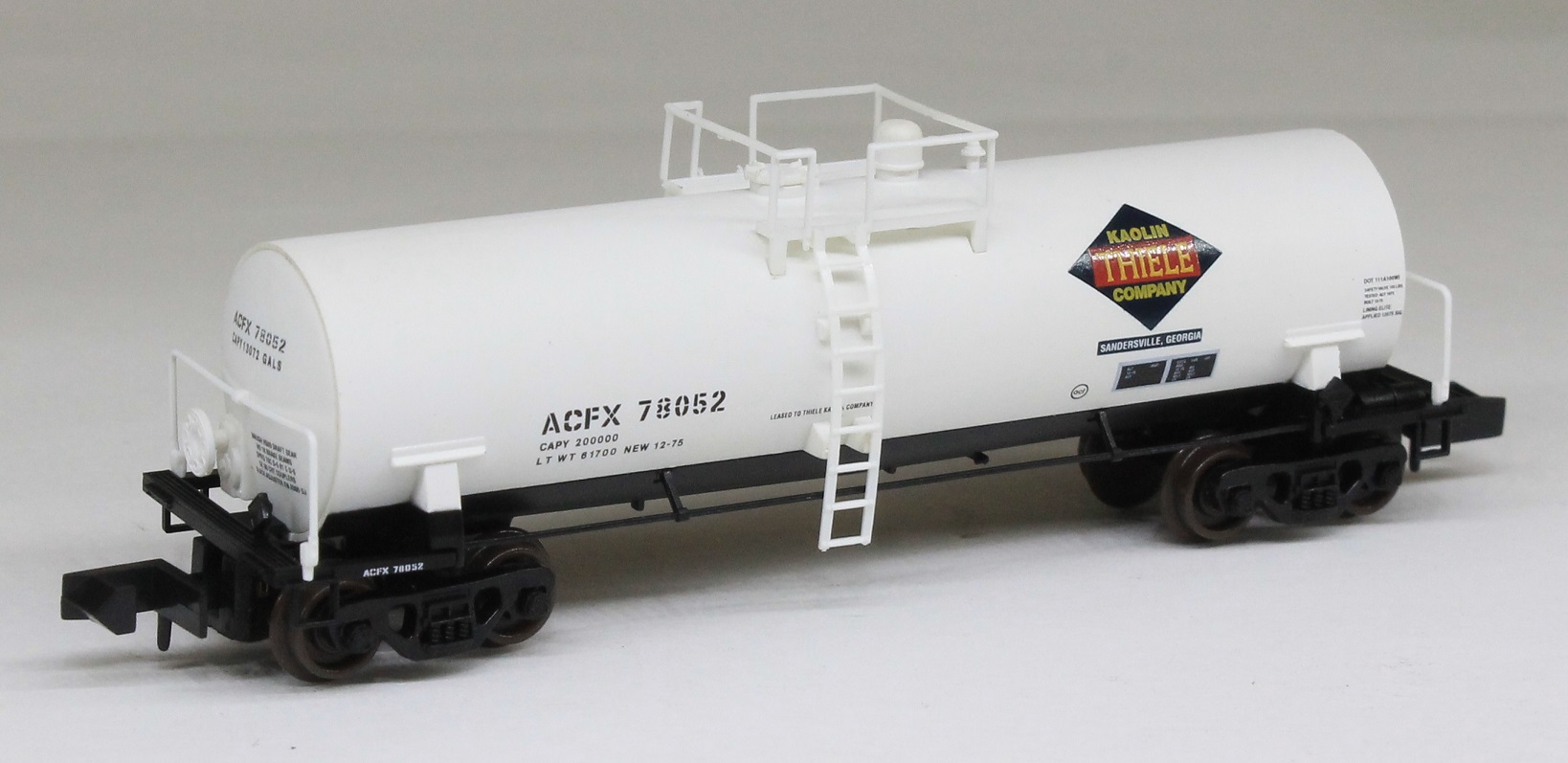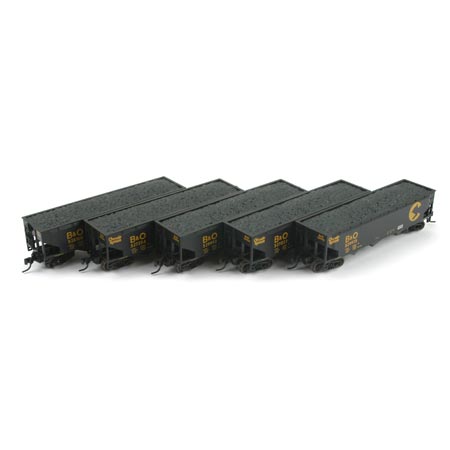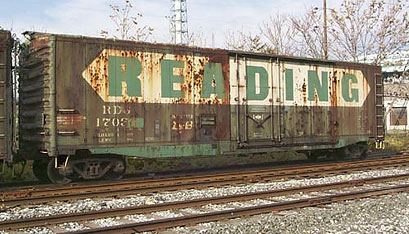Prototype History: The 50-foot boxcar made its first appearance in the 1930s and steadily grew in popularity over the years, which further improved redundancies by allowing for even more space within a given car. Today, the 50-footer remains the common boxcar size. After the second world war ended, and steel became once again readily available, steel became the go-to choice for construction of boxcars. Pullman Standard and ACF were some of the most prolific builders of these cars.
In the 1960s, the flush, "plug" style sliding door was introduced as an option that provides a larger door to ease loading and unloading of certain commodities. The tight-fitting doors are better insulated and allow a car's interior to be maintained at a more even temperature.
In the 1960s, the flush, "plug" style sliding door was introduced as an option that provides a larger door to ease loading and unloading of certain commodities. The tight-fitting doors are better insulated and allow a car's interior to be maintained at a more even temperature.
Road Name History: In 1899, Frank Vernon Skiff founded Jewel in Chicago, Illinois, as a door-to-door coffee delivery service. In 1902, Skiff partnered with his brother-in-law Frank P. Ross, renaming the venture the Jewel Tea Company. By 1903, they had six routes and then 12 routes in 1904 with expansion into Michigan City, Kankakee, and Kewanee. There were 850 routes by 1915.
During World War I, the company faced soaring costs for materials and production and, compounding this problem, the U.S. government commandeered a key Jewel production facility. As a result, by 1919 the company was experiencing severe financial setbacks. Within a few years, however, it returned to profitability through the leadership of new company officials, retired Commanders John M. Hancock and Maurice H. Karker, who had both gained extensive logistics experience as U.S. Navy supply officers during the war.
In 1929, the company built a new office, warehouse, and coffee roasting facility in suburban Barrington, Illinois, creating hundreds of local jobs despite the Great Depression. The Barrington location served as the headquarters and main warehouse facility for both the home delivery and food store divisions until the completion of the new warehouse and office complex at Melrose Park in 1953.
In 1949, deliveries were provided on 1876 routes in 43 states to customers mostly in small towns while customers in cities could go to 154 company owned grocery stores.
Later, the service expanded to include 350 grocery and 10,000 general merchandise items by 1981 when Jewel decided to sell its "Jewel Home Shopping Service" division to its employees and divest itself from its roots. At the time of the divesture, the division provided service to customers in mostly small towns located along 1000 routes in 42 states.The division became a 700-member owned cooperative called "J.T.'s General Store" in which each route sales persons were independent self-employed agents.
In October 1994, a group of the company's managers acquired the assets of "J.T.'s General Store" and "created J.T. Dealers Sales and Service". By 1995, "J.T. Dealer Sales and Service" was providing service to 60,000 customers along 250 routes in 35 states.https://en.wikipedia.org/wiki/Jewel_(supermarket)From Wikipedia
Brand/Importer Information: Micro-Trains is the brand name used by both Kadee Quality Products and Micro-Trains Line. For a history of the relationship between the brand and the two companies, please consult our Micro-Trains Collector's Guide.
Manufacturer Information:  Micro-Trains Line split off from Kadee Quality Products in 1990. Kadee Quality Products originally got involved in N-Scale by producing a scaled-down version of their successful HO Magne-Matic knuckle coupler system. This coupler was superior to the ubiquitous 'Rapido' style coupler due to two primary factors: superior realistic appearance and the ability to automatically uncouple when stopped over a magnet embedded in a section of track. The success of these couplers in N-Scale quickly translated to the production of trucks, wheels and in 1972 a release of ready-to-run box cars.
Micro-Trains Line split off from Kadee Quality Products in 1990. Kadee Quality Products originally got involved in N-Scale by producing a scaled-down version of their successful HO Magne-Matic knuckle coupler system. This coupler was superior to the ubiquitous 'Rapido' style coupler due to two primary factors: superior realistic appearance and the ability to automatically uncouple when stopped over a magnet embedded in a section of track. The success of these couplers in N-Scale quickly translated to the production of trucks, wheels and in 1972 a release of ready-to-run box cars.
Micro-Trains Line Co. split off from Kadee in 1990 to form a completely independent company. For this reason, products from this company can appear with labels from both enterprises. Due to the nature of production idiosyncrasies and various random factors, the rolling stock from Micro-Trains can have all sorts of interesting variations in both their packaging as well as the products themselves. When acquiring an MTL product it is very important to understand these important production variations that can greatly enhance (or decrease) the value of your purchase.
Please consult our Micro-Trains Collector's Guide

Micro-Trains Line Co. split off from Kadee in 1990 to form a completely independent company. For this reason, products from this company can appear with labels from both enterprises. Due to the nature of production idiosyncrasies and various random factors, the rolling stock from Micro-Trains can have all sorts of interesting variations in both their packaging as well as the products themselves. When acquiring an MTL product it is very important to understand these important production variations that can greatly enhance (or decrease) the value of your purchase.
Please consult our Micro-Trains Collector's Guide
Item created by: Lethe on 2015-05-31 17:46:30. Last edited by George on 2024-01-26 20:28:46
If you see errors or missing data in this entry, please feel free to log in and edit it. Anyone with a Gmail account can log in instantly.
If you see errors or missing data in this entry, please feel free to log in and edit it. Anyone with a Gmail account can log in instantly.


